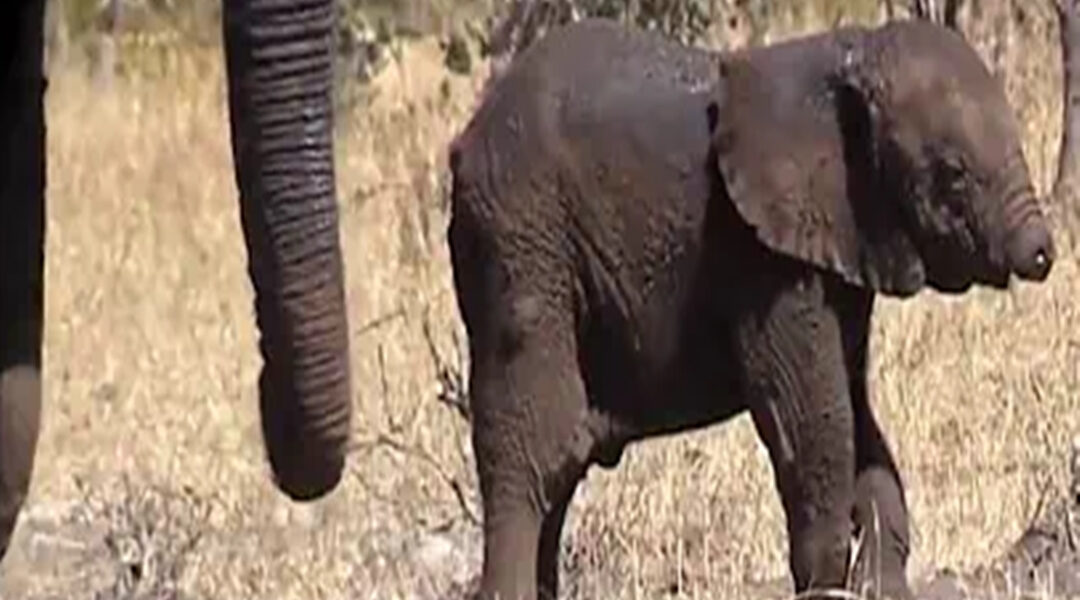On the sweeping plains of South Africa’s Kruger National Park, safari workers recently spotted a sight that left them shaken: a baby elephant wandering with its herd — without its trunk.

For an elephant, the trunk is more than just a body part. It is life itself. It is food, water, defense, and love, all in one. A fusion of upper lip and nose, the trunk contains more than 100,000 muscles, making it one of nature’s most remarkable tools. With it, an elephant can delicately pluck fruit from a tree or rip down whole branches. It can drink two gallons of water at a time, spray dust to shield its skin from the sun, or hold another elephant close in an embrace.
Without it, survival becomes almost impossible. Adults must eat up to 600 pounds of vegetation and drink as much as 50 gallons of water each day. A calf still learning how to live in the wild faces nearly insurmountable odds without the ability to feed or drink properly.

How this little one lost its trunk is uncertain. Rangers and guides have theories. Crocodiles often ambush young elephants at the water’s edge, clamping down on trunks as they drink. Lions, too, will latch onto a trunk in the chaos of a hunt. Another grim possibility is that the calf was caught in a poacher’s snare, the cruel wire tightening until the trunk was severed.
Whatever the cause, the reality is heartbreaking. The calf can no longer use its trunk to grasp, drink, or even comfort its herd mates. Socially, it is at risk of being left behind, unable to communicate through the trunk touches and caresses that are the heartbeat of elephant life. And physically, its vulnerability to predators has increased.

Still, there is resilience in the wild. Against all odds, the calf continues to walk among its herd. Its presence is both inspiring and troubling — a testament to survival, but also a reminder of the dangers elephants face daily, from predators to human interference.
Whether this calf can endure without its most vital tool remains uncertain. But its struggle highlights the fragility of life in the African bush and the importance of protecting these giants who, even when whole, must fight each day to survive.

And perhaps, as the herd moves forward, the little elephant’s greatest chance lies not in its own strength but in the love and protection of the family that refuses to leave it behind.




